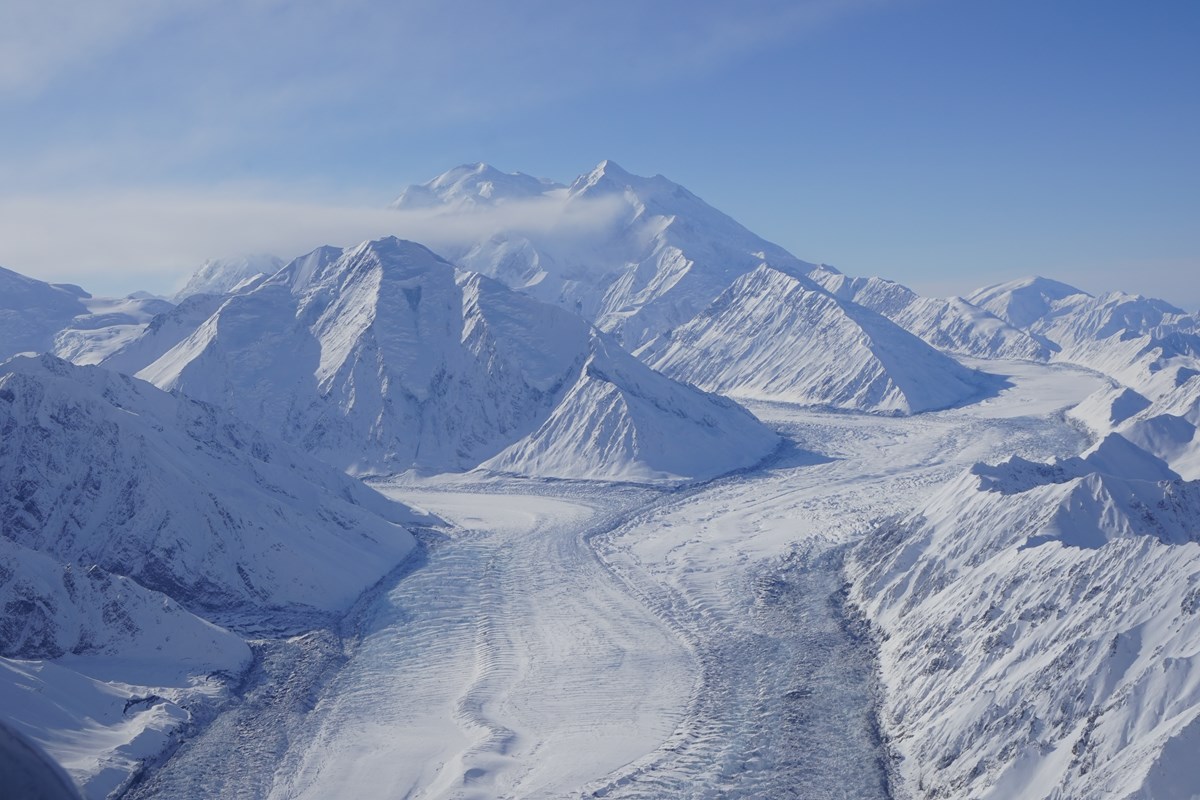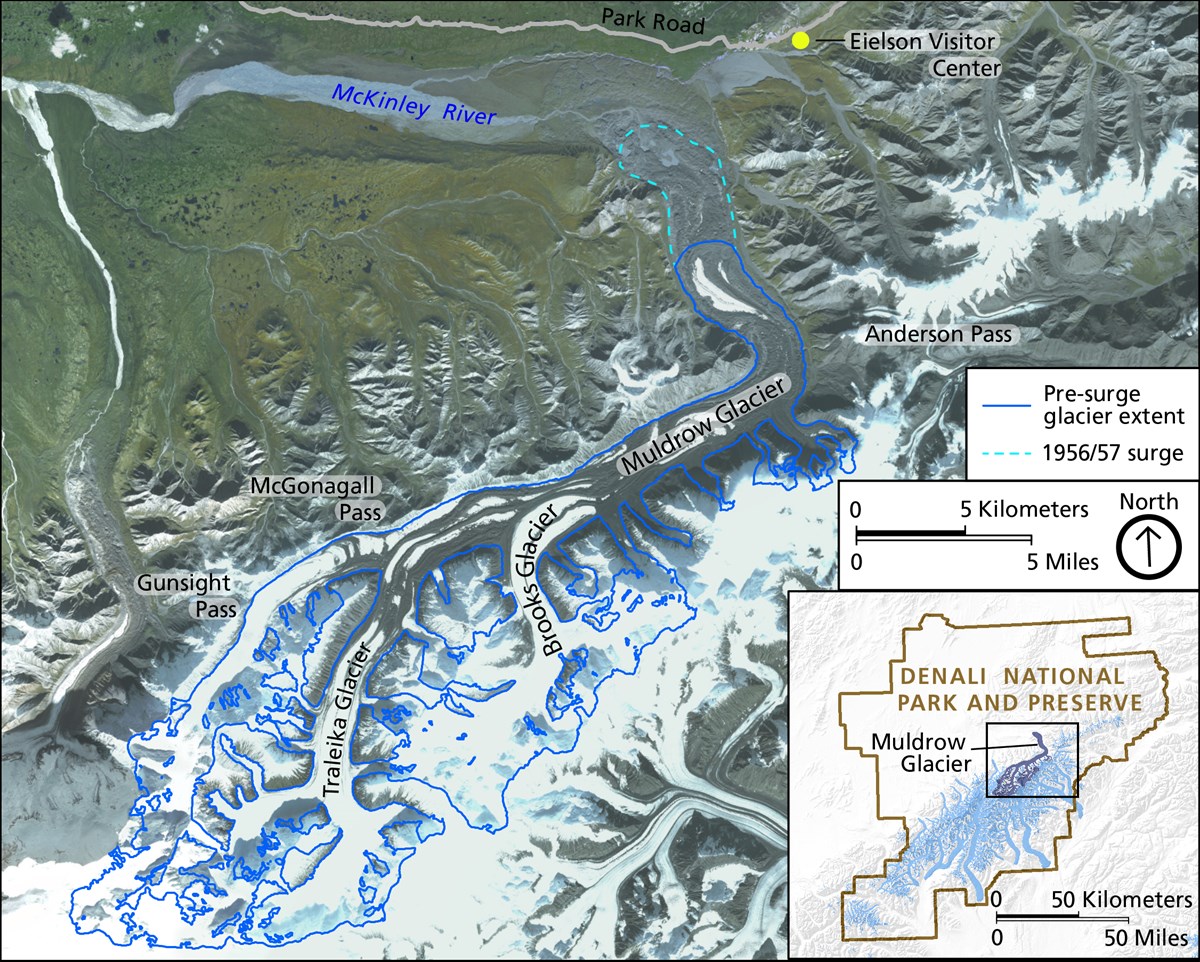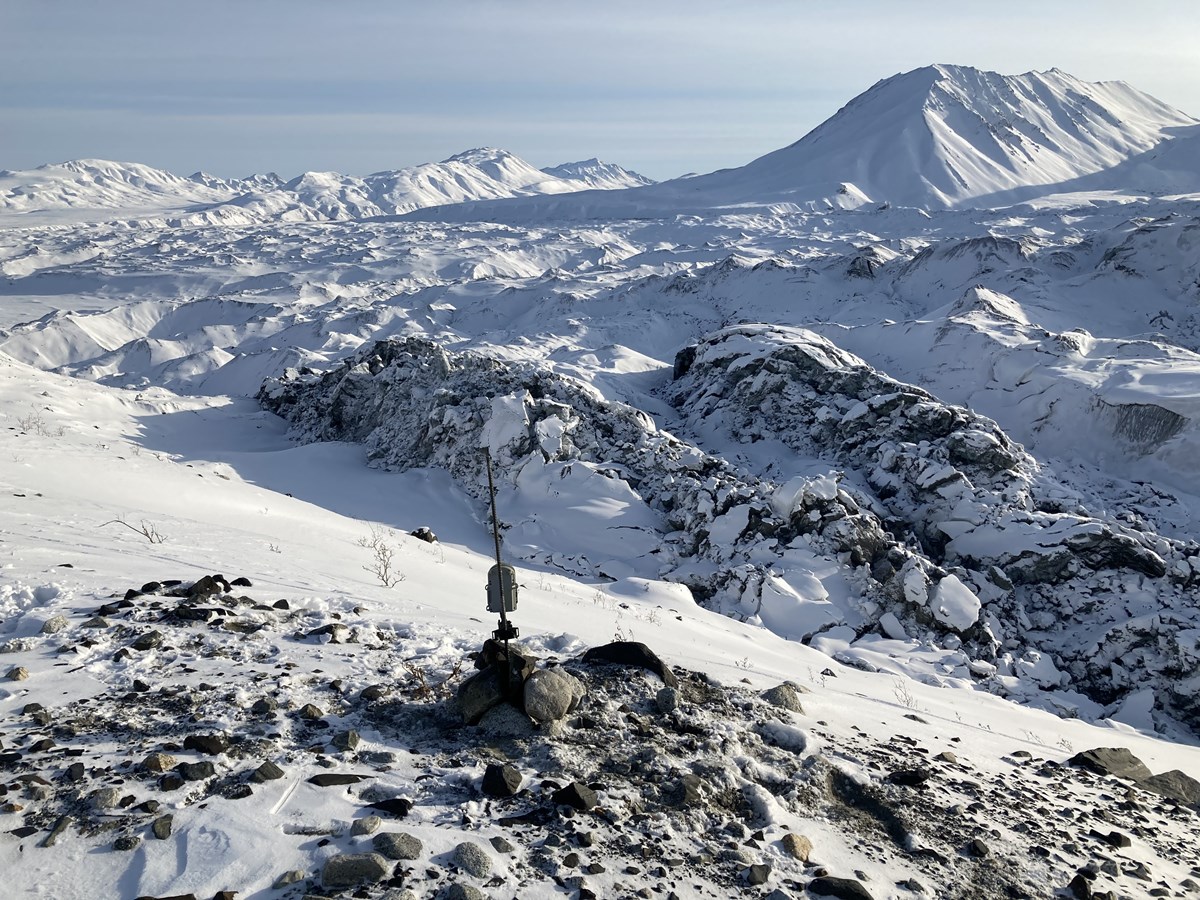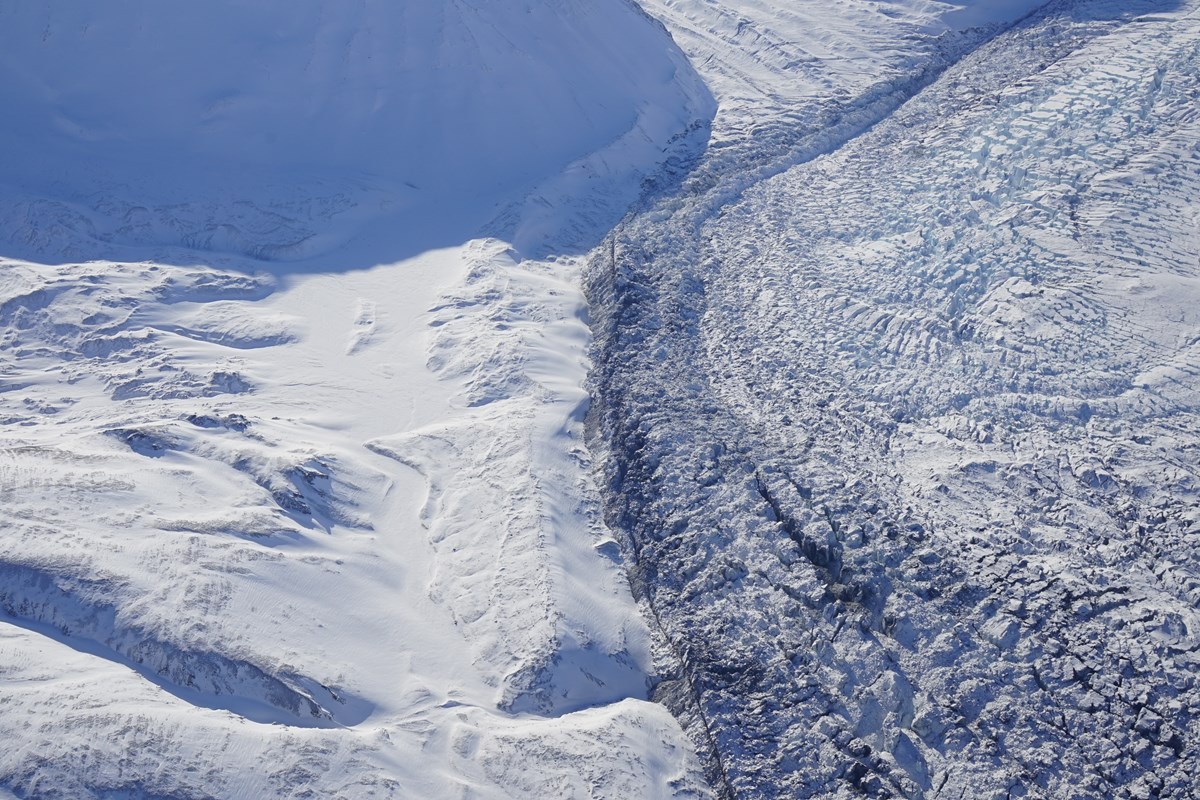
Denali National Park, Alaska – Denali’s 39-mile long Muldrow Glacier runs from Denali’s northeastern slope and eventually flows to the McKinley River. The glacier is now experiencing a geologic phenomenon known as a surge. According to the National Park Service, a glacial surge is:
“…a short-lived, cyclical event where ice within a glacier advances suddenly and substantially, sometimes moving at speeds 10 to 100 times faster than normal.”
Glaciers are defined as bodies of ice that flow downhill, and flow rates vary from glacier to glacier. Only about one percent of the world’s glaciers surge. Surge glaciers experience short periods of rapid flow and long periods of slower movement. The glacier stores a large portion of ice in a reservoir at the top – during a surge event, ice is transported from this reservoir area to the terminus of the glacier. Water flow in the glacier can also increase, which may cause the McKinley River to flood.

Glacial surges are caused by a long-term buildup of ice in the upper portions of the glacier during its quiescent phase (non-surge) until the glacier reaches a threshold where it cannot support the ice. When the glacier reaches this threshold, it forces much of its meltwater to its bed, and it accumulates at the terminus of the glacier. This meltwater creates a lubricated surface for the ice river to move more easily on. The effect can create a positive feedback loop contributing to higher glacier speeds and exponential crevasse formation. Once the water is released, the glacier returns to its quiescent phase.
Chris Palm, a pilot for K2 Aviation, first noticed a difference flying over the glacier in early March. He took photos and contacted some geologists who confirmed the glacier was surging. Palm remarked,
“I was looking at the glacier and I was thinking it looks really difficult to get onto the glacier right now. It’s all shattered and torn up and jagged ice and deep crevasses everywhere.”
Before this surge, the Muldrow Glacier moved between three and eleven inches every day – now, it is moving thirty to sixty feet per day. The glacier last surged in 1956-57, where the glacier moved four miles in four months! Muldrow also likely surged between 1906 and 1912, so experts predict this event occurs approximately every 50 years.

The surge is impacting some mountaineers who were set to traverse the glacier to access a northern route up Denali. Reports from pilots, satellites, and climbing reports from the last surge show that the glacier will likely be too hazardous to cross this season.
The National Park Service is using multiple methods to track and monitor the glacier during the surge. The park’s scientific response includes satellite data analysis, aerial surveys, continuous GPS, time-lapse cameras, sound monitoring, seismic monitoring, and more. Check out the National Park Service’s article to learn more about their monitoring process.
